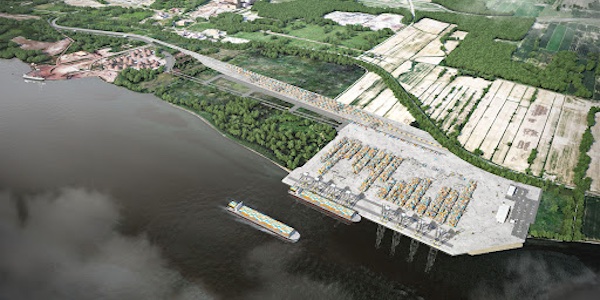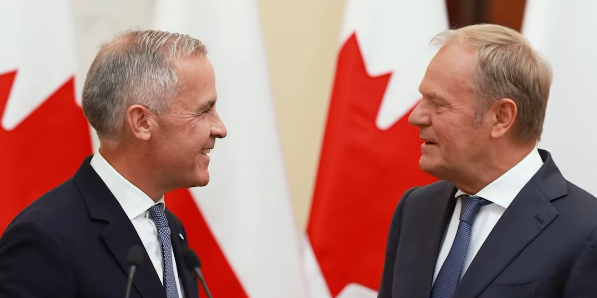Arab Ministers Meet on Response to Israeli Attack in Qatar

© Agence France-Presse — Getty Images


© Agence France-Presse — Getty Images


Russia and Belarus have begun their joint military drills Zapad-2025, simulating missile attacks and nuclear scenarios. Analysts warn the exercises serve as both a rehearsal for war and a signal to NATO, echoing Soviet-era shows of force.
Zapad-2025 started on 12 September and is scheduled to last until 16 September on Belarusian and Russian territory. One of the declared goals is to conduct missile launches, including tests of the Oreshnik system— a missile that Putin claims to be “unstoppable.”
The official theme is framed as the “application of groupings of troops in the interests of ensuring the military security of the Union State,” — Putin’s long-stalled project to absorb Belarus into a single country.

This year’s exercise will also simulate decision-making around the use of nuclear weapons and the deployment of nuclear-capable intermediate-range missiles that Moscow has promised to transfer to Minsk.
While Russia has not disclosed exact numbers, Belarusian dictator Alyaksandr Lukashenka claimed last December that “several dozen” tactical nuclear weapons were already on Belarusian soil.
According to the Chief of the General Staff of Belarus, the Zapad-2025 exercises on Belarusian territory will be held at three training grounds located in the Vitebsk, Minsk, and Hrodna regions.
Investigators from Skhemy tracked the buildup of Russian military equipment and the deployment of additional infrastructure in these areas, allowing them to localize the sites of the upcoming drills.
While Belarusian authorities have not officially disclosed the exact locations, Lukashenka confirmed that Zapad-2025 will take place at training grounds near the city of Barysaw.

The drills follow the latest Russian drone incursions into Polish airspace, incidents that Warsaw says had been prepared for months. In anticipation of Zapad-2025, Poland has reinforced its eastern border with around 40,000 troops.
“Poland has been preparing for the Zapad manoeuvres for many months,” Deputy Defense Minister Cezary Tomczyk told Polsat News.

Foreign Minister Radosław Sikorski warned that “very aggressive scenarios” will be practiced, recalling that earlier Zapad exercises preceded Russia’s invasions of Georgia in 2008 and Ukraine in 2014 and 2022.
NATO radars and allied aircraft are on high alert, with Lithuania estimating that around 30,000 Russian and Belarusian troops will take part.
While Moscow insists the drills are defensive, Western analysts see Zapad as both a rehearsal for potential offensives and a political message. Ukrainian President Volodymyr Zelenskyy has warned that the exercise could be “a cover” for further aggression against Ukraine’s western neighbors.
Even if smaller in scale than Zapad-2021, this year’s drills underscore Russia’s reliance on Belarus as a forward base, its willingness to rattle NATO with nuclear signalling, and its long-standing tradition of using military theatre — and now network warfare simulations — as geopolitical intimidation.
Poland has reinforced its eastern border with around 40,000 troops.
“Poland has been preparing for the Zapad manoeuvres for many months,” Deputy Defense Minister Cezary Tomczyk told Polsat News.
Foreign Minister Radosław Sikorski warned that “very aggressive scenarios” will be practiced, recalling that earlier Zapad exercises preceded Russia’s invasions of Georgia in 2008 and Ukraine in 2014 and 2022.
NATO radars and allied aircraft are on high alert, and Lithuania estimates that around 30,000 Russian and Belarusian troops will participate.
The Zapad (“West”) exercises date back to the Soviet era of the 1970s, when they were first designed to showcase nuclear strike capabilities and consolidate the unity of the Warsaw Pact.
Zapad-77 simulated nuclear strikes against NATO, while Zapad-81 became the largest Soviet military exercise ever, involving up to 150,000 troops and testing the SS-20 ballistic missile.
Declassified US intelligence reports from the 1980s described Zapad as one of the USSR’s most important military drills, aimed at testing wartime command structures and operational coordination across the Warsaw Pact.
Revived in 1999 under Vladimir Putin, Zapad was incorporated into a four-year cycle of large-scale Russian military exercises. Later versions integrated lessons from Russia’s wars in Crimea, Syria, and Ukraine, such as the use of drones for reconnaissance, tactical missile strikes, and counter-insurgency operations in urban areas.
The exercises have often included invented scenarios aimed at signalling to NATO and shaping perceptions abroad.
In Zapad-2017, Russia and Belarus staged combat against the fictional state of Veyshnoria— a “hostile” territory carved out of western Belarus, close to NATO borders. Analysts saw the scenario as a thinly veiled rehearsal for operations against Lithuania, Poland, or Ukraine, masked under the guise of fighting separatism.

Zapad-2025 builds on this legacy, introducing new layers of digital and communications warfare.
The discovery this summer of Russian drones using Polish and Lithuanian SIM cards reveals how Moscow tests invasion routes before using them. Since late 2023, Russia has equipped its Shahed attack drones with cellular modems—first Ukrainian SIM cards, then expanding to NATO countries.
In July, investigators found Polish and Lithuanian SIM cards in Russian drone wreckage shot down over Ukraine. Drones use cellular towers to triangulate navigation and transmit real-time targeting data while appearing as domestic mobile traffic.
Two months later, on September 9-10—just two days before Zapad-2025 began—Russian drones using Polish SIM cards violated Polish airspace. NATO fighters shot down at least four of 19 drones that crossed into Poland during Russia’s massive 415-drone attack on Ukraine.
Just as Veyshnoria was a fictional enemy created to test ground scenarios, Russia’s hijacking of local telecom networks signals Moscow’s intent to blend conventional and hybrid tactics in future conflict.


Mark Carney a dévoilé la liste des 5 premiers projets qui seront examinés par le Bureau des grands projets.
Au Québec, le gouvernement fédéral a choisi le projet d’agrandissement du port de Montréal à Contrecœur, en Montérégie.
Autres projets priorisés:
[L'article Le port de Contrecœur fait partie des premiers grands projets priorisés par Ottawa a d'abord été publié dans InfoBref.]


Romania is accelerating the revival of its defense industry with American and German support, prioritizing the domestic production of drones, explosives, and gunpowder, Radio Free Europe Romania reports.
The move comes as the country consolidates its role as a key NATO hub on the Alliance’s eastern flank and a critical logistics lifeline for Ukraine amid the ongoing Russo-Ukrainian war.

In spring, Romania’s Ministry of Economy announced that the Transylvanian city of Brașov would host new facilities for the production of drones, explosives, and ammunition.
The local Carfil military plant is expected to produce drones using components supplied by American defense company Periscope Aviation.
“This is not a simple acquisition; it is a complete technology transfer, meant to build an indigenous industrial capacity in Romania — a long-term strategic objective for many NATO member states that want to reduce their dependence on imports and strengthen their defense industrial base,” stressed Economy Minister Bogdan Ivan.
Mr. Ivan also confirmed that drone production is scheduled to begin this summer, with an annual target of approximately 3,500 units.
“We are beneficiaries of the European SAFE Mechanism, financed by the European Commission with up to €150 billion. We have submitted Romania’s production capacities for the next ten years, along with proposals on how we can evolve, what we can build, and where we can be competitive,” Ivan said in an interview with Digi24.
At the same time, Germany’s Rheinmetall defense conglomerate is building in Brașov what will be the largest military gunpowder factory in Europe, with an investment of €400 million.
Romania’s leadership has emphasized that domestic production of gunpowder is a top priority, as the country currently imports it from Serbia, where much of the supply originates in Russia.
“This is essential for Romania’s security and independence,” said former Economy Minister Radu Oprea, underlining the need to reduce reliance on foreign sources.
Last year, Prime Minister Marcel Ciolacu also declared that Romania would soon host the “most modern gunpowder plant in Europe.”
The new projects in Brașov are part of a broader national strategy to revitalize Romania’s defense industry. German investments are also reinforcing the Mediaș plant, which is set to expand production of military vehicles.
In Satu Mare, plans are underway to launch production of Leopard tanks, further strengthening Romania’s heavy weapons capabilities.
These initiatives align with NATO’s push to ramp up production capacities across Europe in response to Russia’s ongoing war against Ukraine. Romania’s geographical position and existing infrastructure make it a frontline state in both logistics and industrial support for Kyiv.

Photo: Rheinmetall Automecanica SRL plant in Mediaș, Romania. May, 2024. Romania. Frame from the Nova Tv Medias video channel
Since the 1990s, Romania has cultivated increasingly close ties with major foreign defense companies.
Israel’s Elbit Systems was the first, establishing a joint venture with Aerostar Bacău in 1997 to modernize the Romanian MiG-21 fleet to the LanceR standard. The company also operates a local branch, Elmet International SRL, which produces avionics and drone technology.
Partnerships with US companies such as General Dynamics, Lockheed Martin, and Raytheon Technologies have resulted in:
Meanwhile, France’s Airbus, Naval Group, and Thales have supplied military communication systems, taken over and modernized the Ghimbav aircraft components factory, and entered into partnerships with the Constanța Naval Shipyard.
In addition, Poland’s PGZ has signalled interest in competing with its Borsuk model in the upcoming tender for Romania’s new infantry fighting vehicles.

Bayraktar drones stand lined up at a production facility in Brasov, which received massive investments from Airbus in 2024. Photo: Profimedia Images, Hotnews
Strategic significance for NATO and Ukraine
Romania is boosting its defense sector under the new 2024–2030 National Defense Industry Strategy, raising military spending above 2% of GDP and prioritizing advanced technologies such as AI, cybersecurity, and drones.
The plan focuses on:
Since Russia’s full-scale invasion of Ukraine in 2022, Romania has re-examined its security posture as a direct neighbor of the war zone. Hosting vital NATO facilities and serving as a transit hub for military aid, Romania has become indispensable to both Ukraine’s defense and NATO’s deterrence strategy.


Mark Carney a annoncé une série de mesures visant à protéger et transformer les industries du pays malmenées par les tarifs douaniers américains.
Entreprises
Le gouvernement fédéral va:
Travailleurs
Un nouveau programme de formation et d’aide à la recherche d’emploi devrait être offert à 50 000 personnes.
«Achetez Canadien»
Une nouvelle politique doit être mise en place pour garantir que le gouvernement fédéral et les sociétés d’État s’approvisionnent en priorité auprès de fournisseurs canadiens.
[L'article Plus de 5 milliards $ de nouvelles mesures pour aider les entreprises a d'abord été publié dans InfoBref.]
Une cour d’appel fédérale américaine a confirmé un jugement du Tribunal de commerce international des États-Unis.
Ce tribunal avait jugé en mai que le président américain ne pouvait pas invoquer une loi d’urgence économique pour imposer des droits de douane généralisés sur les produits provenant de presque tous les pays.
Le gouvernement américain a indiqué qu’il allait saisir la Cour suprême.
En attendant, les tarifs restent en vigueur jusqu’à la mi-octobre.
[L'article Des droits de douane américains ont à nouveau été déclarés illégaux a d'abord été publié dans InfoBref.]
Selon des informations obtenues par La Presse, en un peu plus de 6 mois, entre le 20 janvier et le 31 juillet, le gouvernement Carney a attribué 146 contrats à des entreprises des États-Unis, pour un total de 946 millions $.
Pour comparaison, au cours des trois dernières années, Ottawa avait accordé chaque année en moyenne 1,3 milliard $ de contrats à des entreprises américaines.
[L'article Le gouvernement fédéral confierait davantage de contrats à des entreprises américaines que les années précédentes a d'abord été publié dans InfoBref.]


Le premier ministre Mark Carney a rencontré hier son homologue polonais, Donald Tusk, dans le cadre d’une tournée en Europe qu’il poursuivra aujourd’hui en Allemagne et demain en Lettonie.
Le nouveau partenariat signé par Carney et Tusk vise à renforcer les liens entre le Canada et la Pologne en matière de commerce, défense et sécurité énergétique.
Par ailleurs, le Canada présidera l’an prochain à Kielce, en Pologne, l’Exposition internationale de l’industrie de la défense – l’un des plus importants salons professionnels européens consacrés à la défense et à la sécurité.
[L'article Le Canada a conclu un nouveau partenariat avec la Pologne a d'abord été publié dans InfoBref.]